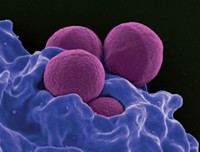Advertisement
Grab your lab coat. Let's get started
Welcome!
Welcome!
Create an account below to get 6 C&EN articles per month, receive newsletters and more - all free.
It seems this is your first time logging in online. Please enter the following information to continue.
As an ACS member you automatically get access to this site. All we need is few more details to create your reading experience.
Not you? Sign in with a different account.
Not you? Sign in with a different account.
ERROR 1
ERROR 1
ERROR 2
ERROR 2
ERROR 2
ERROR 2
ERROR 2
Password and Confirm password must match.
If you have an ACS member number, please enter it here so we can link this account to your membership. (optional)
ERROR 2
ACS values your privacy. By submitting your information, you are gaining access to C&EN and subscribing to our weekly newsletter. We use the information you provide to make your reading experience better, and we will never sell your data to third party members.
Biological Chemistry
Vaccine Helper Targets Muscle Cells
July 21, 2008
| A version of this story appeared in
Volume 86, Issue 29
Vaccines are formulated with additives that enhance their immune-stimulating effects. Although these "adjuvants" have been used for many years, their mechanism of action and cellular targets remain unknown. Ennio De Gregorio, Rino Rappuoli, and coworkers at Novartis Vaccines & Diagnostics, in Siena, Italy, have used DNA microarray analysis to identify the genes affected by three types of adjuvants (Proc. Natl. Acad. Sci. USA, DOI: 10.1073/pnas.0804699105). Following injections in mouse muscle, the oil-in-water emulsion MF59, a common adjuvant in flu vaccines, induced changes in the expression of 891 genes, whereas CpG and alum, two other common adjuvants, affected only 387 and 312 genes, respectively. Some genes were modulated only when MF59 and CpG were administered together. The researchers identified 168 "adjuvant core-response genes" affected by all three adjuvants. These core genes regulate the expression of molecules that are usually associated with inflammatory responses. MF59 induced stronger and faster immune responses than CpG or alum. The researchers discovered two biomarkers that they used to identify muscle cells as the primary target of MF59.




Join the conversation
Contact the reporter
Submit a Letter to the Editor for publication
Engage with us on Twitter